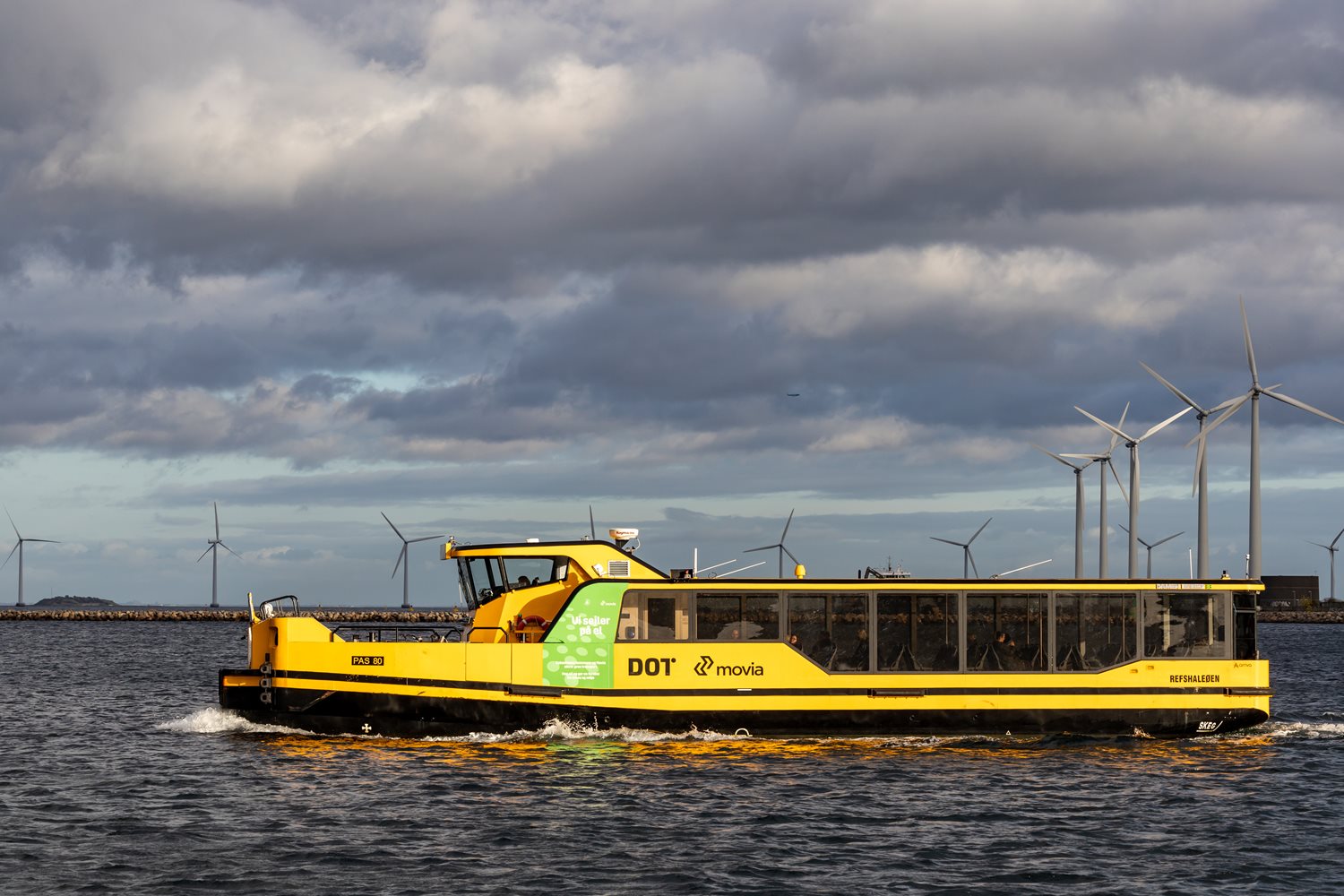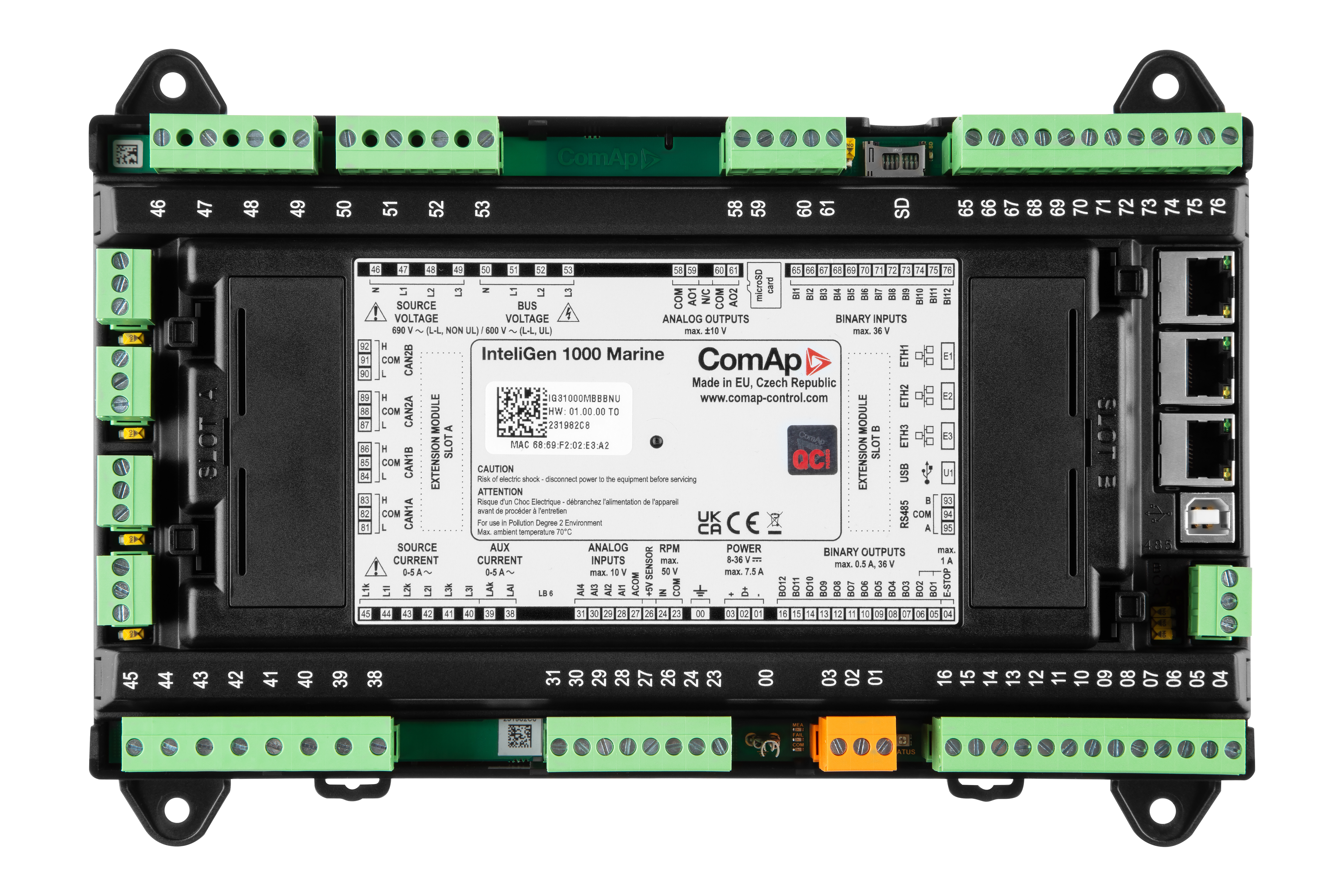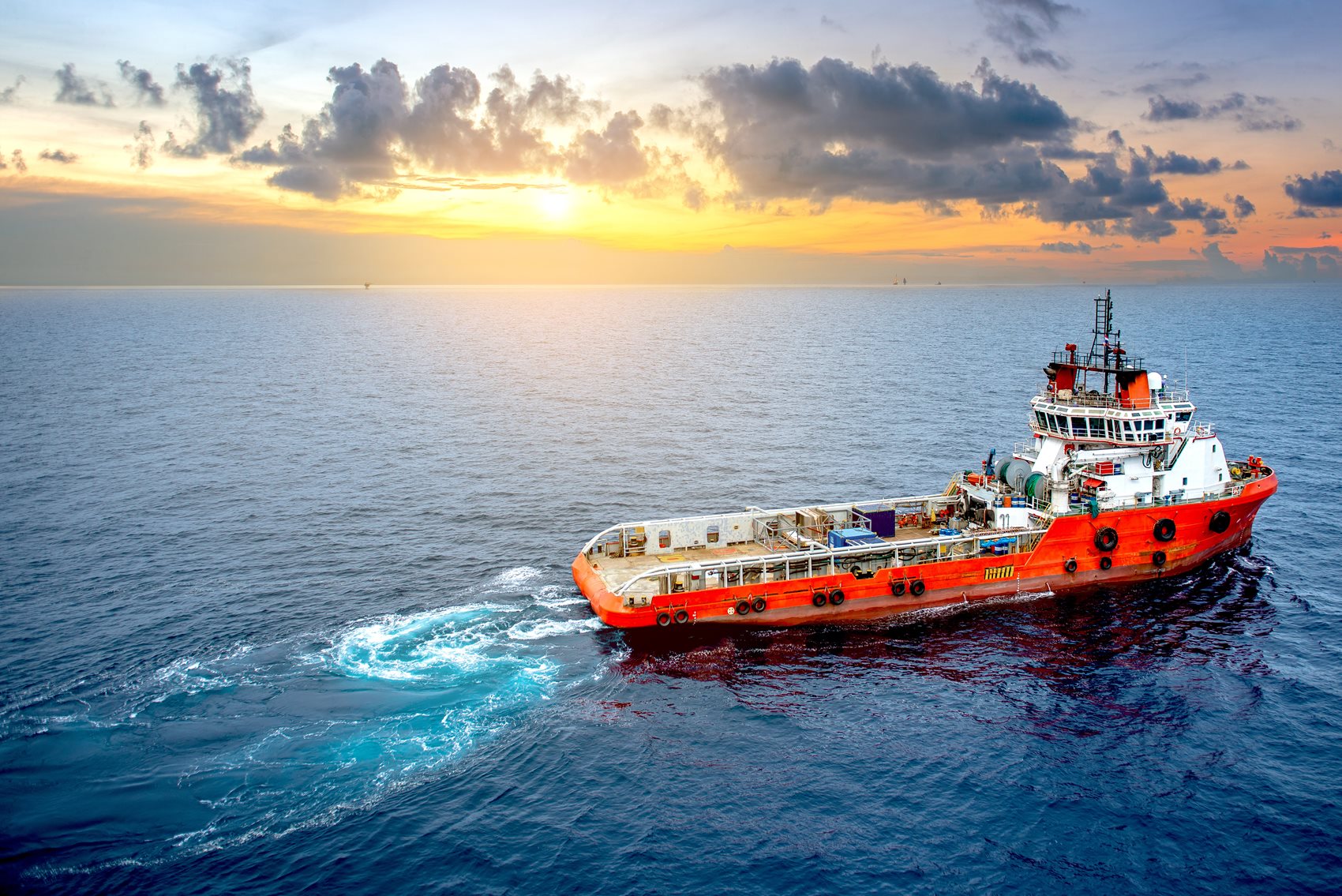You need an account to access this content
Create a free account and get access to all downloads and more!

Whitepaper

29 Nov 2023
5 min read
What are the first steps the marine industry can take to start their journey to more sustainable operations? While things might be a bit simpler when it comes to building new vessels, what about the approximately 100,000 existing vessels that currently operate globally? What are the effective technologies that can be adopted to reduce operating emissions?
The industry is at a turning point and pressed to make changes to improve energy efficiency and reduce its environmental impact. With the OECD estimating that in 2022 shipping accounted for 858 million tonnes of CO2 emissions globally, the only way for ship owners and operators to move forward is to find the right technology to reduce greenhouse emissions. To help steer the industry in the right direction, the International Maritime Organization (IMO), the specialised United Nations agency responsible for regulating shipping, has set ambitious targets to reduce the well-to-wake emissions of international shipping by at least 20% by 2030 and achieve net-zero by 2050.
While there are different technologies at hand, one of the key solutions to achieve these goals is electrification of ships, which refers to the use of electricity as the main source of power for propulsion and auxiliary systems, instead of standard engines. Electrification of ships requires the integration of various onboard energy sources, such as diesel generators, batteries, fuel cells, and solar panels, and increasing the implementation of shore power, which can provide more flexibility, reliability, and sustainability for the onboard power system.
This technology offers several benefits. The first and most obvious is reduced fuel consumption and emissions, improved performance and safety, as well as providing more precise and responsive control of the propulsion and auxiliary systems. For example, a study by DNV found that electrification of ships could improve the manoeuvrability, stability, and availability of the ships, and reduce the risk of blackouts. In addition, by simplifying the design and configuration of the onboard power system and the reduction of fuel consumption, electrification also lowers the operating and maintenance costs of ships. A study by Siemens Energy estimated that more than 70% of the ferry fleet in its study could benefit economically from electrification and reduce the total cost of ownership.
In the past few years, we have seen the launch of numerous fully electric vessels, a signal that the industry is beginning to understand the benefits of electrification. The majority of these initiatives are aimed at vessels operating on shorter routes, such as tugboats and ferries. These vessels can leverage existing battery technologies to operate on renewable energy sources like wind or solar power, demonstrating the practicality and sustainability of electric propulsion.

However, electrification of ships also poses new challenges and requirements for the control and management of the onboard power system, such as:
While the benefits of electrification are numerous, they do require serious preparations and ship owners and operators will need to take several steps to ensure the vessels are well prepared for their journey to sustainability. One way for the marine industry to have a smoother transition from the traditional diesel-powered engines to electrification and introduction of more renewable energy sources is pairing up with the right partners that have the right expertise.
To address these challenges and enable electrification of ships, all the while ensuring compliance with IMO emission reduction requirements, ComAp developed a new generation of marine controllers for paralleling applications, the InteliGen 1000 Marine.
This versatile and powerful controller can handle any onboard energy system, including both AC and DC sources or busses. Designed to meet the latest industry standards and legislations, it offers a unique pre-programmed control concept for fast and simple energy source commissioning, and a large built-in PLC interpreter to meet individual project requirements. Moreover, it has expandable functions via a software key mechanism, and it is ready for new markets and applications, as it can support the AC or DC power management requirements not only today, but also in the future.

What is the key benefit of using such a control solution? Reduction of fuel consumption and emissions of ships is the main benefit, and it is achieved by enabling the use of renewable and low-carbon energy sources, and by optimising the operation and efficiency of the onboard energy sources.
The following sections will introduce some of the features and benefits of this controller, specifically designed for the marine industry.
The industry’s regulatory organisations set the rules and InteliGen 1000 Marine follows, simplifying compliance for your vessel. This control solution is designed to meet the latest industry standards and legislation, such as the International Association of Classification Societies (IACS) Unified Requirements, the International Maritime Organization (IMO) regulations, and the relevant International Electrotechnical Commission (IEC) standards.
The InteliGen 1000 Marine complies with the IACS Unified Requirements E10 and E22, which specify the test procedures and performance criteria for the type approval of the marine controllers. Additionally, the InteliGen 1000 Marine complies with the guidelines and requirements for cyber resilience of on-board systems and equipment set by the IACS Unified Requirement E27 and relevant IEC standards, such as IEC 62443.
The InteliGen 1000 Marine offers a unique concept of pre-programmed controller functions for fast and simple commissioning, and a large built-in PLC interpreter to meet individual project requirements. The pre-programmed controls will help automate various actions you would have otherwise had to program using PLC, saving programming time.
The control solution has InteliGen 1000 Marine dedicated application firmware for each type of onboard power plant element, such as AC gensets, DC gensets, AC-bus connected BESS, DC-buss connected BESS, grid-forming inverters, AC bus-tie breakers, DC bus-tie breakers, AC or DC shore connections, and more. The user can select the appropriate application firmware for each power plant element, and the InteliGen 1000 Marine will automatically configure the parameters and functions according to the selected application.
The InteliGen 1000 marine not only standardises the interface across multiple energy source variants, but also enhances the user experience by providing a consistent and intuitive operational environment. This uniformity across ComAp solutions significantly simplifies the training process for operators, reducing the time and resources required for them to become proficient. The end result is a more efficient and streamlined operation, with operators able to seamlessly transition between different energy sources thanks to the standardised interface.

If a user needs to push further from the pre-programmed controls, they can also customise the parameters and functions according to the specific needs and preferences of each project, using the free PC tool for configuration and monitoring. This will help drastically reduce the engineering and commissioning time requirements for both simple and complex marine power management projects.
The InteliGen 1000 Marine has a large built-in PLC interpreter, which allows the user to design powerful logic to solve any non-standard task, using an easy-to-use PLC editor. The powerful PLC interpreter utilizes function blocks to create customised access and control of any parameter, input, output, or function of the InteliGen1000 Marine. The PLC interpreter can also communicate with other devices and systems using various interfaces, such as Modbus, CAN, or Ethernet. The PLC interpreter is free of charge and allows the user to quickly adjust for new requirements.
The InteliGen 1000 Marine has high measurement accuracy for both AC and DC sources or busses. It can measure AC voltage with an accuracy below 0.25% up to 690 VAC, AC current with an accuracy below 0.75%, and frequency with an accuracy below 0.001 Hz. The InteliGen 1000 Marine can also measure DC parameters via a brand-new extension module. This enables DC voltage measurement with an accuracy below 0.2% up to 1500 VDC, and DC current measurement with an accuracy below 0.5% up to 3000 ADC.
This unique DC measurement module is fully type approved, enabling the safe measurement and insulation monitoring of a wide range of DC systems. The high measurement accuracy of the InteliGen 1000 Marine ensures optimal control and protection of onboard energy sources and other power plant components, and the accurate monitoring and reporting of the power quality and consumption.
With the InteliGen 1000 Marine, ship operators can rely on remote communication and control of the onboard power system. This is ensured by the control solution’s advanced communication capability. The InteliGen1000 Marine can handle up to 16 ComAp clients (HMIs, PC tool), 6 Modbus TCP clients, 1 Modbus RTU client, and 1 SNMP agent, all of them at the same time. This means that the controller can support multiple users and devices as required for the increasing complexity of marine power management systems.
The InteliGen 1000 Marine also has an integrated Modbus master function, which enables it to act as a Modbus client and poll data from any Modbus-based device, such as diagnostics, BMS systems, inverters, VFDs, etc. The controller can connect up to 64 controllers on one CANBus segment, and all the data are user configurable, which gives a high level of flexibility to the users and allows them to react quickly to new requirements.
The advanced communication capability of the InteliGen 1000 Marine enhances the connectivity and interoperability of the onboard power system, and enables the data collection and analysis for the optimization and maintenance of the onboard power system.

We discussed the importance of reliability and resiliency of the onboard power system as one of the key factors for preparing the vessels for electrification. By providing built-in CAN redundancy for the essential communication bus between controllers and Hot-Swap capability, the InteliGen 1000 Marine controller helps to ensure the reliability and scalability of the onboard power system.
The CAN redundancy feature allows the controllers to communicate and operate even if one of the CAN lines fails, while the Hot-Swap feature allows the replacement of a faulty controller without interrupting the operation of the other controllers. This provides added reliability for critical applications such as dynamic positioning platforms.
The InteliGen 1000 Marine controller also allows the expansion and customization of the I/O capacity by using extension modules and distributed I/Os. It has 4 analog inputs, 2 analog outputs, 12 digital inputs, and 12 digital outputs on board, and can be extended up to an additional 80 analog inputs, 30 analog outputs, 128 digital inputs, and 120 digital outputs, by using extension modules.
It can also share up to 32 distributed binary outputs and 4 distributed analog outputs over the CAN bus, which can be used by any controller on the same site. Additionally, this marine control solution is compatible with other controllers, such as the ComAp InteliDrive DCU Marine controllers and can integrate the engine monitoring, control, and protection over CAN bus. This combination of ComAp products provides significant reductions in installation and troubleshooting costs.
The extendibility features of the InteliGen 1000 Marine controller enable the integration of virtually any marine power plant topology, and enhance the performance and safety of the onboard power system.
The user access management feature of the InteliGen 1000 Marine provides a secure and customised solution for multiple users of the onboard power system, and aids with system protection and troubleshooting. Using this control solution, a user can create and manage up to 30 unique accounts for different users and roles such as operators, engineers, fleet management personnel, vessel owners, or third-party stakeholders, to access, monitor, or control the onboard power system from different locations and platforms according to their assigned roles.

Preventing all potential cyber security threats is one of the main concerns in all industries, including marine, and a key aspect when it comes to modernisation of vessels. The InteliGen 1000 Marine offers new cyber security features, which provide a secure solution for the complete vessel power plant by implementing a robust security concept. It covers all aspects of security, such as user login, secure cyphering connections with the controller, brute force protection, signed (protected) ComAp firmware, firewall protection, and others.
The InteliGen 1000 Marine complies with the IEC 62443 standard, which provides the guidelines and requirements for the cyber security of the industrial automation and control systems. It also enables compliance with the IMO MSC.428(98) resolution, which encourages the maritime administrations to ensure that cyber risks are appropriately addressed in the safety management systems of ships. Additionally, InteliGen 1000 Marine complies with IACS Unified Requirement E27 which defines the requirements for the cyber resilience of on-board Operational Technology systems which comes into effect on July 1, 2024 for all vessels contracted for new construction.
When developing the InteliGen 1000 Marine our goal was to introduce an innovative solution that can control all power sources onboard a vessel, and embrace both AC and DC power management systems into one, and help optimise the vessel’s operations and efficiency.
The InteliGen 1000 Marine can help improve the performance and safety of ships, by providing more precise and responsive control of the propulsion and auxiliary systems, and by enhancing the redundancy and fault tolerance of the onboard power system. This solution not only lowers the operating and maintenance costs of ships, but it also simplifies the design and configuration of the onboard power system that can lead to significant cost reductions. By streamlining the engineering process and shortening commissioning timeframes, ship owners can realise substantial savings.
Interested in implementing the InteliGen 1000 Marine to achieve your environmental and economic goals? Contact our marine experts to modernise your maritime operations and accelerate your energy efficiency transition.